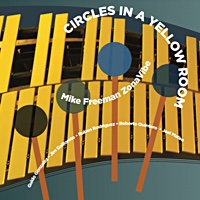The Web is a teeming commercial city. Its haphazardly planned. Its public spaces are mobbed, and signs of urban decay abound in broken links and abandoned projects. Malware and spam have turned living conditions in many quarters unsafe and unsanitary. Bullies and hucksters roam the streets. An entrenched population of rowdy, polyglot rabble seems to dominate major sites.
People who find the Web distasteful ugly, uncivilized have nonetheless been forced to live there:
Its the place to go for jobs, resources, services, social life, the future. But now, with the purchase of an iPhone or an iPad, there's a way out, an orderly suburb that lets you sample the Webs opportunities without having to mix with the riffraff.
This suburb is defined by apps from the glittering App Store:
Neat, cute homes far from the Web city center, out in pristine Applecrest Estates. In the migration of dissenters from the open Web to pricey and secluded apps, were witnessing urban decentralization, suburbanization and the online equivalent of white flight.
The parallels between what happened to cities like Chicago, Detroit and New York in the 20th century and whats happening on the Internet since the introduction of the App Store are striking. Like the great modern American cities, the Web was founded on equal parts opportunism and idealism. Over the years, nerds, students, creeps, outlaws, rebels, moms, fans, church mice, good-time Charlies, middle managers, senior citizens, starlets, presidents and corporate predators all made their home on the Web. In spite of a growing consensus about the dangers of Web vertigo and the importance of curation, there were surprisingly few walled gardens online like the one Facebook purports to (but does not really) represent.
But a kind of virtual redlining is now under way. The Webtropolis is being stratified. Even if, like most people, you still surf the Web on a desktop or laptop, you will have noticed pay walls, invitation-only clubs, subscription programs, privacy settings and other ways of creating tiers of access. All these things make spaces feel safe not only from viruses, instability, unwanted light and sound, unrequested porn, sponsored links and pop-up ads, but also from crude design, wayward and unregistered commenters and the eccentric voices and images that make the Web constantly surprising, challenging and enlightening.
When a wall goes up, the space you have to pay to visit must, to justify the price, be nicer than the free ones. The catchphrase for software developers is a better experience. Behind pay walls like the ones on Honolulu Civil Beat, the new venture by the eBay founder Pierre Omidyar, and Rupert Murdochs Times of London, production values surge. Cool software greets the paying lady and gentleman; they get concierge service, perks. Web stations with entrance fees are more like boutiques than bazaars.
The far more significant development, however, is that many people are on their way to quitting the open Web entirely. That's what the 50 million or so users of the iPhone and iPad are in position to do. By choosing machines that come to life only when tricked out with apps from the App Store, users of Apples radical mobile devices increasingly commit themselves to a more remote and inevitably antagonistic relationship with the Web. Apple rigorously vets every app and takes 30 percent of all sales; the free content and energy of the Web does not meet the refined standards set by the App Store. For example, the Weather Channel Max app, which turns the weather into a thrilling interactive movie, offers a superior experience of meteorology to that of Weather.com, which looks like a boring cluttered textbook: white space, columns of fussy bullet points and thumbnail images.
The App Store must rank among the most carefully policed software platforms in history, the technology writer Steven Johnson recently noted in The Times. Policed why? To maintain the App Stores separateness from the open Web, of course, and to drive up the perceived value of the stores offerings. Perception, after all, is everything: many apps are to the Web as bottled water is to tap an inventive and proprietary new way of decanting, packaging and pricing something that could once be had free.
Apps sparkle like sapphires and emeralds for people bored by the junky nondesign of monster sites like Yahoo, Google, Craigslist, eBay, YouTube and PayPal. That sparkle is worth money. Even to the most committed populist theres something rejuvenating about being away from an address bar and ads and links and prompts those constant reminders that the Web is an overcrowded and often maddening metropolis and that you're not special there. Confidence that youre not going to get hustled, mobbed or mugged that's precious, too.
I see why people fled cities, and I see why they're fleeing the open Web. But I think we may also, one day, regret it.
CITY NUMBERS
On the Net, Apple types may be fleeing the hordes, but in life the young and educated are heading to urban centers. Check out these and other findings by the Brookings Institution at brookings.edu/metro.
WHET YOUR APPETITE
Still don't really know what an app is? Dont buy an iPad yet; watch video reviews of apps free on YouTube. Search iPad app reviews for funny homemade demos. Dont miss Xeni Jardins on boingboingvideo.
ALCHEMY
The Elements, a ravishing multimedia periodic-table app based on The Elements, by Theodore Gray, may blow your mind and teach you chemistry. Think, like President Obama, that the iPad is just a distraction? The Elements shows otherwise. At the App Store.




































